Ever ponder how a single color can change your living space and mood? Welcome to color drenching, a game-changing interior design approach. It focuses on using a bold, rich hue across your decor. Let’s explore its history, psychological impact, and practical tips for creating stunning spaces. Get ready to see your home in a new light!
Key Takeaways
- Color drenching creates a cohesive look throughout your space.
- This technique can enhance the perception of height and depth.
- Saturated colors influence mood and emotional well-being.
- Practical applications can apply to both residential and commercial designs.
- Choosing the right color palette is essential for a successful implementation.
Introduction to Color Drenching
Color drenching represents a significant shift in interior design trends. It involves covering a room in a single, bold color. This transforms walls, ceilings, and trim into a cohesive statement. Unlike traditional methods that focus on contrast and variety, color drenching highlights elegance and sophistication.
The outcome is a space that feels either energizing or calming, depending on the color chosen. This technique brings a sense of unity and depth to your environment. By adopting it, you can enhance any room’s look, making it both visually stunning and a reflection of your personal taste. Whether you prefer vibrant colors or softer hues, color drenching can dramatically change your space.
The Rich History of Color Drenching
Color drenching’s history is deeply rooted in the art world, closely tied to modernist design. Artists like Piet Mondrian and Henri Matisse explored color’s expressive power. They reshaped how we see and use color in interior spaces. This journey showed how colors can deeply influence our environment and evoke emotions.
Modernist Influences on Color Schemes
Modernist design thinkers, including Mondrian and Matisse, focused on color’s emotional impact. Their works, rich in vibrant tones, set the stage for today’s color practices. The history of color drenching reveals a significant shift towards bold, monochromatic schemes in the 1960s and 70s. This shift brought a cohesive, yet bold aesthetic to the forefront.
Evolution from the 20th Century to Now
Over the years, color’s evolution has been a central theme. The minimalist movements of the 1980s and 90s introduced a focus on harmonious palettes, aiming for serenity in design. Today, color drenching is back in vogue, thanks to social media. These platforms showcase how people personalize their spaces, blending aesthetics with emotional resonance. This fusion connects personal expression with modern design.

| Decade | Key Color Trends | Influential Movements |
|---|---|---|
| 1960s | Vibrant monochromatic schemes | Modernist design |
| 1970s | Rich jewel tones | Postmodernism |
| 1980s | Minimalist harmonic palettes | Minimalism |
| 1990s | Muted colors with pops of brightness | Contemporary |
| 2020s | Personalized color drenching | Social Media Influences |
Understanding the Concept of Color Drenching
Color drenching is a transformative technique that enriches a space, inviting exploration of its depth and richness. It involves covering a room in a single color, from walls and ceilings to furniture and accessories. This method creates a unified environment that feels both cohesive and intentional.
What is Color Drenching?
This design strategy immerses a room in a chosen color, applied across all surfaces. It allows for texture and finish variations to add interest. This blend of visual elements creates a stunning backdrop that celebrates color’s beauty. Each light and shadow play reveals the chosen hue’s many nuances.
Distinction Between Color Drenching and Subtle Accent Walls
Understanding the difference from accent walls is key to grasping this trend. Accent walls use contrasting colors to draw attention and create focal points. In contrast, color drenching focuses on unity, aiming to envelop the space in a single vibe. This technique fosters a serene and inviting atmosphere, fitting various design styles.
Psychological Effects of Saturated Colors
The impact of color on our emotions is profound, shaping how we perceive spaces and the moods they evoke. Understanding the psychological effects of color allows you to create environments that enhance comfort and stimulation in your home. By selecting shades that align with your desired atmosphere, you can significantly alter your experience within a room. Let’s explore how color psychology affects our moods and how to choose hues for emotional impact.
Color Psychology and Mood
Colors have the remarkable ability to evoke strong feelings and reactions. For instance, calm blues often promote tranquility, making them ideal for bedrooms or serene spaces. On the other hand, vibrant reds can ignite passion and energy, fitting well in spaces designed for gatherings or creative work.
Choosing Colors for Emotional Impact
When selecting colors for your home, consider the emotional impact of hues. Below is a guide to help you choose the ideal colors for various effects:
| Color | Emotional Impact | Ideal Room |
|---|---|---|
| Blue | Calm, Relaxation | Bedrooms, Bathrooms |
| Red | Energy, Passion | Living Rooms, Kitchens |
| Yellow | Happiness, Creativity | Offices, Playrooms |
| Green | Balance, Freshness | Libraries, Gardens |
| Purple | Luxury, Ambition | Dens, Dining Rooms |
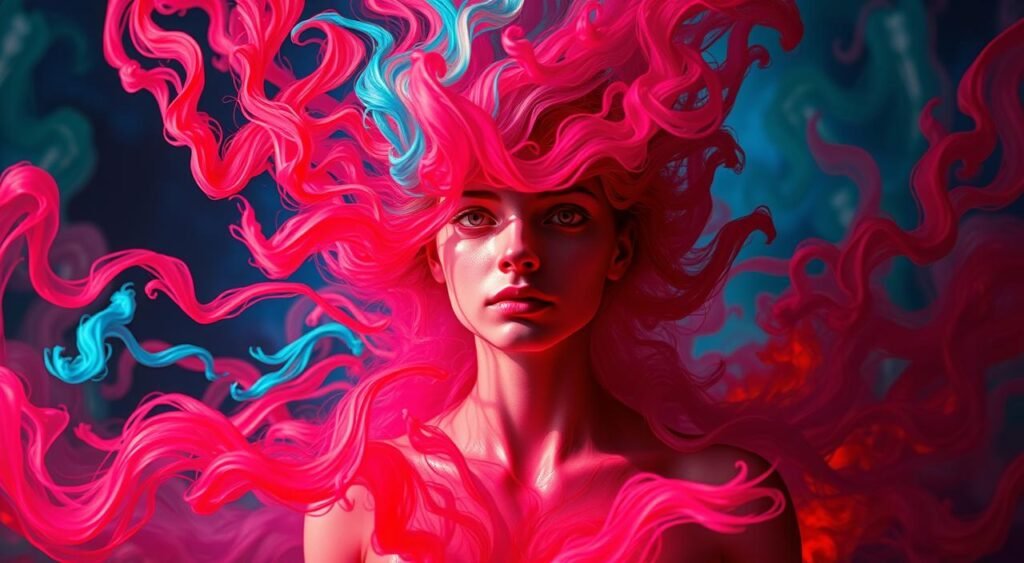
Benefits of Color Drenching in Interior Design
Color drenching is a powerful tool in interior design, transforming spaces in many ways. It creates a cohesive design by uniting various elements into a harmonious whole. By covering a room in a single color, it instantly becomes more welcoming.
Creating Cohesive and Harmonious Spaces
Color drenching unifies different parts of a room, creating a serene atmosphere. It showcases specific features in a seamless way. A room painted in one color communicates a clear design concept, allowing furniture and décor to complement each other.
Maximizing Small Spaces with Color
In compact living areas, color drenching offers significant benefits. A consistent color palette can dramatically change how we perceive space. Light colors make rooms feel airy, while darker tones add coziness. A uniform color scheme makes walls appear to recede, increasing the sense of space.
Enhanced Illusion of Height and Space
Color drenching also enhances vertical perception. Painting a room from floor to ceiling in a single color tricks the eye into seeing taller walls. This creates a sense of grandeur in unexpected places. By balancing colors, we can explore depth and elevate ceilings to become focal points.
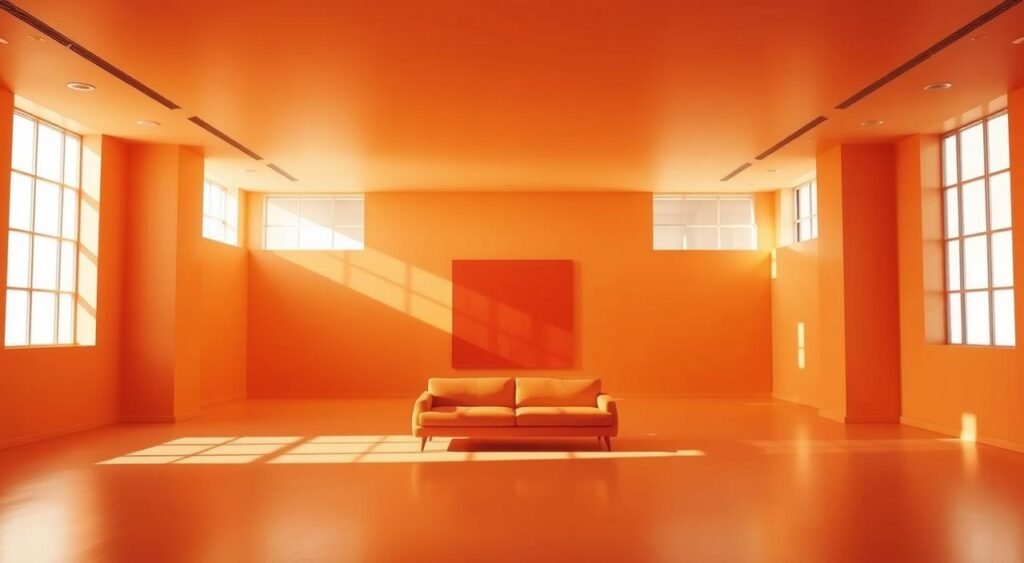
Practical Applications of Color Drenching
Color drenching is incredibly versatile, fitting into various settings. It can transform both residential and commercial spaces. By using a single, bold color, you create a unified atmosphere. This can evoke different emotions and moods.
Color Drenching in Different Room Types
Consider how different rooms can benefit from color drenching. Living areas can feel warmer and more inviting with deep colors. Bedrooms become havens of peace with soft shades, promoting better sleep. Kitchens, on the other hand, can burst with energy, sparking creativity and community.
Commercial vs. Residential Use Cases
In commercial spaces, color drenching can showcase a brand’s identity and influence customer behavior. A café can use bright colors to attract visitors and improve their experience. Offices can use this technique to create a dynamic environment, boosting teamwork and collaboration. Color drenching’s flexibility makes it valuable in both personal and professional design.
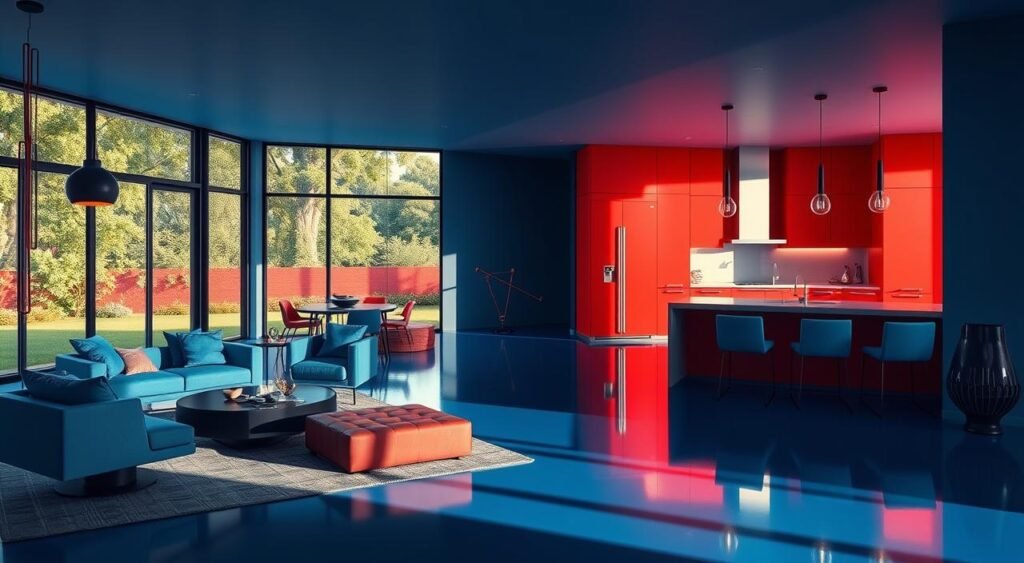
Choosing the Right Color Scheme for Your Space
Choosing colors for your interior should reflect your personal style and the atmosphere you want to create. Colors greatly affect how you feel in different areas of your home. The right palette can turn a space from ordinary to extraordinary.
How Colors Influence Atmosphere
Each color has its own psychological impact. Blues and greens promote calmness and serenity, ideal for bedrooms or relaxation areas. Brighter colors like yellows and oranges energize or uplift, perfect for kitchens or playrooms. Understanding color influence on atmosphere helps you make choices that align with your desired emotional experience.
Finding Your Ideal Monochromatic Palette
A monochromatic palette can create cohesive and elegant spaces. By exploring different shades and tones of your chosen color, you can add visual interest without chaos. This approach ensures a smooth transition from room to room, improving your home’s flow. For tips on developing a minimalist aesthetic through color, check out this helpful guide on minimalist home decor.
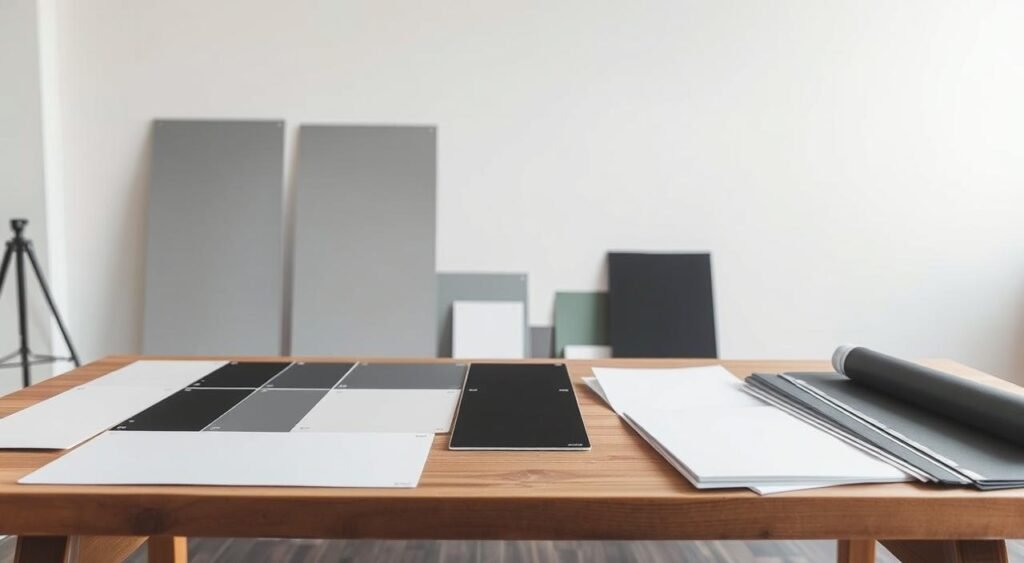
Implementation Tips for Successful Color Drenching
Color drenching success hinges on careful planning. The blend of color, texture, and finish is key to creating a welcoming atmosphere. A balanced approach can uplift the mood of your rooms while keeping the design unified.
Texture and Finish: The Secret to Depth
Different textures and finishes can make your color choices pop. Mixing matte and glossy surfaces adds depth and interest. Try a matte wall finish with glossy accents for a refined look that invites exploration.
This combination of textures and finishes enriches the design, adding dimension beyond simple color.
Incorporating Patterns within a Monochrome Theme
Patterns can add vibrancy without overwhelming a color-drenched space. Use subtle patterns in textiles, wallpaper, or art that resonate with your main color. This approach enhances the monochrome theme, keeping the design cohesive and visually appealing.
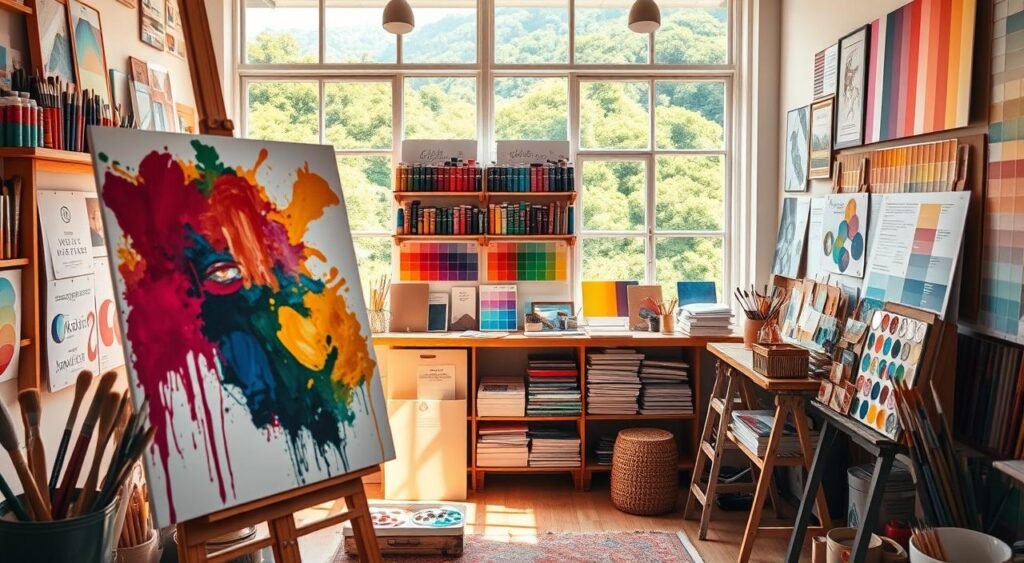
Common Mistakes to Avoid with Color Drenching
Color drenching can transform your space, but it’s not without its challenges. Knowing the common pitfalls helps achieve better results. The key is balancing saturation to create a welcoming atmosphere. Exploring the subtleties ensures your design stands out without overwhelming the senses.
Overdoing Saturation: Balancing Bold and Subtle
Embracing bold colors requires caution to avoid over saturation. Too much intensity can overwhelm the senses, creating a chaotic environment. View your space as a canvas, balancing colors like an artist does. Select a few bold hues and complement them with softer tones for a cohesive look.
This approach fosters harmony and allows each color to shine. It prevents the space from feeling cluttered or overwhelming.
Ignoring Lighting Considerations
Lighting effects significantly alter how colors appear in a room. Natural light, artificial lighting, and the time of day all impact color perception. Spend time observing how your chosen colors react to different lighting conditions. This prevents common color drenching mistakes.
Experiment with your palette under various lighting scenarios. This ensures colors don’t clash or appear unflattering in unexpected situations.
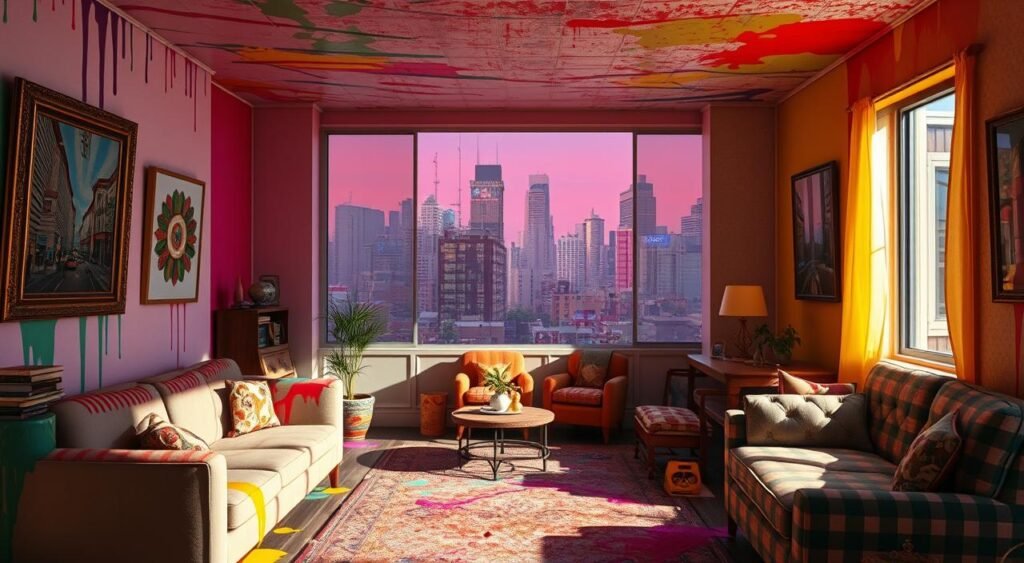
Trendy Color Choices for Modern Spaces
Choosing the right colors is key to elevating your home’s look. In today’s design, trendy colors, like mid dark tones, are everywhere. They add depth and character, making modern spaces inviting.
The Popularity of Mid to Dark Tones
Colors like navy blue and olive green are now favorites in modern interiors. They bring a bold yet cozy vibe, turning rooms into cozy havens. These shades can be a focal point or woven throughout, creating a striking yet warm look.
Airy Light Shades vs. Cozy Dark Shades
On the other hand, light colors open up spaces, making them feel bigger and brighter. It’s all about balance. Whether you prefer the warmth of dark tones or the openness of light ones, knowing how they work in modern spaces is essential.
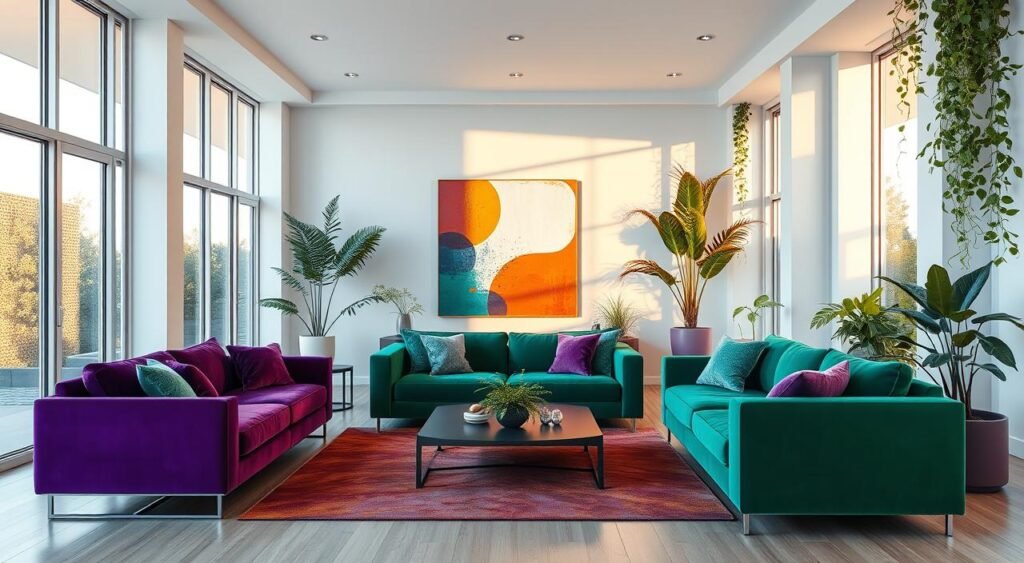
By considering these color trends, you can create a harmonious, stylish home. Knowing what each shade brings helps tailor your space to your taste and comfort.
Color Drenching: Practical Budget Tips
Transforming your space with color drenching doesn’t have to be expensive. With the right budget tips, you can achieve a high-end look that’s affordable for all. Discover how careful paint selection and finishes can create stunning interiors without the hefty price tag.
How to Achieve a High-End Look Affordably
Creating a luxurious feel begins with the right paint color. Choose a single shade and experiment with different finishes like matte, eggshell, and satin. This approach adds depth and sophistication while keeping costs low.
Smart Selection of Paints and Finishes
Quality paint is key, even if it’s more expensive upfront. High-quality paints cover better and last longer, saving you money over time. Look to brands like Benjamin Moore and Sherwin-Williams for options that enhance your design without draining your wallet.
| Finish Type | Recommended Use | Budget-Friendly Brands |
|---|---|---|
| Matte | Low-traffic areas (bedrooms, living rooms) | Behr, Valspar |
| Eggshell | Medium-traffic areas (hallways, dining rooms) | Glidden, Dutch Boy |
| Satin | High-traffic areas (kitchens, bathrooms) | Benjamin Moore, Sherwin-Williams |
Understanding different finishes helps you choose the best for your home. This smart paint selection leads to a polished, well-designed space that’s also budget-friendly.
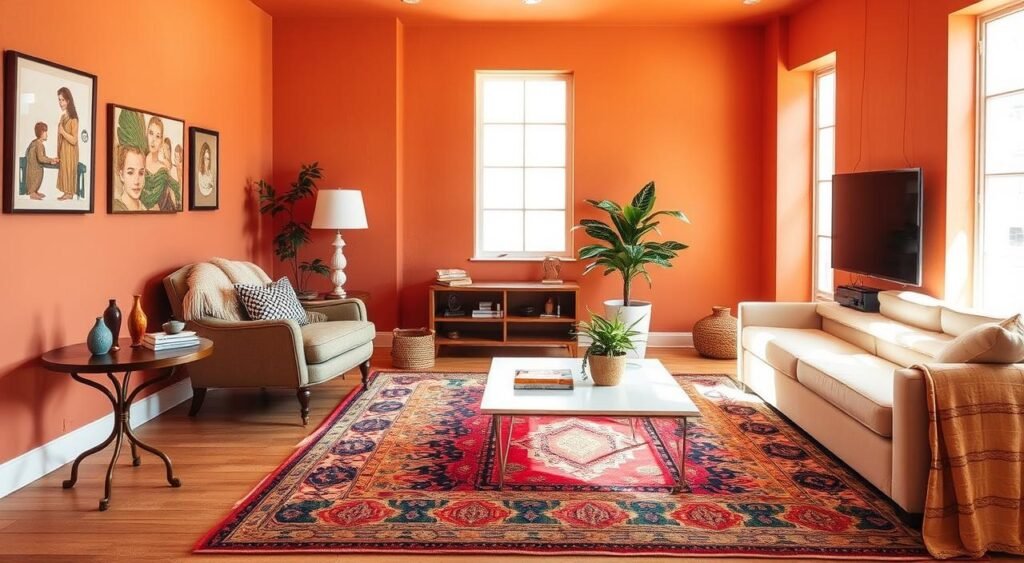
Real-Life Examples of Color Drenching in Action
Exploring real-life examples of color drenching can spark your design journey. Various case studies reveal the transformative power of this technique. From vibrant public spaces to tranquil private homes, influential designers have showcased its effectiveness. They’ve demonstrated how color drenching can craft the perfect atmosphere. Let’s examine some standout instances where this approach has significantly impacted design.
Case Studies of Successful Transformations
The Ace Hotel in New York City’s renovation stands out as a case study. Designers infused each room with vibrant hues, honoring the city’s energetic culture. These saturated colors highlighted architectural features and unified the space, appealing to visitors.
In Los Angeles, a trendy café exemplifies the technique. Its deep teal walls, paired with warm wood accents, created a cozy yet modern atmosphere. This example highlights how color drenching can transform everyday spaces.
How Influential Designers Utilize Color Drenching
Designers like Kelly Wearstler and Jonathan Adler use color drenching to convey personality and elegance. Wearstler’s bold colors in hotel interiors make each room unforgettable. Adler’s vibrant palettes add joy and playfulness, showing color’s significant impact on our environment.
These designers demonstrate how strategic color use enhances both style and functionality. I encourage you to draw inspiration from these examples and talented designers for your own color drenching projects!
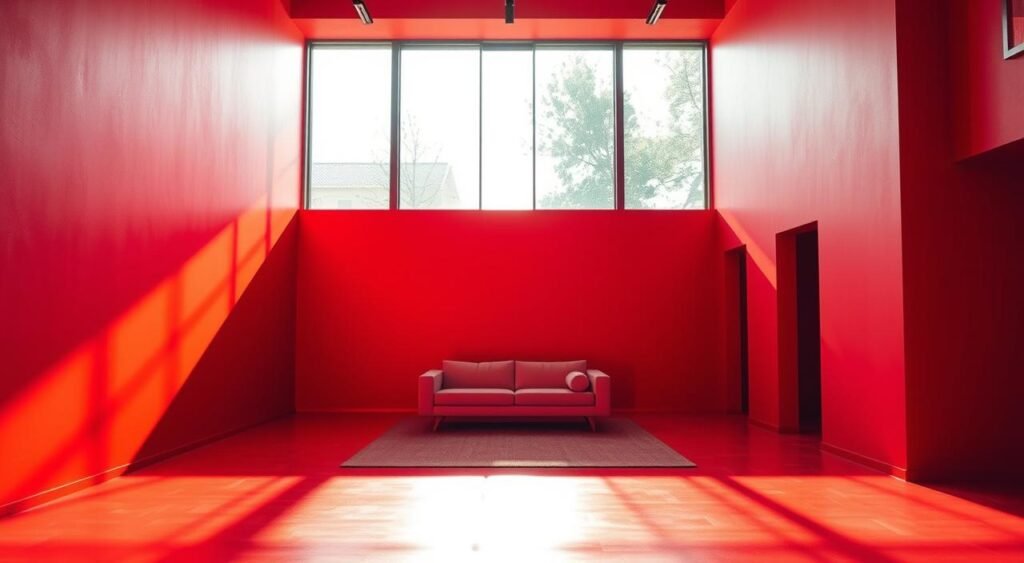
Conclusion
As we conclude this color drenching recap, it’s evident that this technique can revitalize your interiors. By focusing on a single vibrant hue, you create spaces that are not only harmonious but also emotionally resonant. This can profoundly impact your mood and overall living experience.
Consider these interior design insights as you plan your own spaces. Color drenching is a fun way to explore your personal style while ensuring your environment fosters positivity and well-being. Its beauty lies in being accessible, allowing anyone to achieve luxurious designs without breaking the bank.
Whether you’re embarking on a new project or refreshing your current decor, a well-chosen color can transform a room. Embrace the world of color drenching and let your creativity soar!
FAQ
What exactly is color drenching in interior design?
Color drenching is a design technique where a space is enveloped in a single, saturated hue. This approach transforms the environment by unifying walls, ceilings, and furnishings in a bold color. It enhances the visual perception of the space, creating a cohesive environment.
How can color drenching impact the mood of a room?
The psychology behind color is key in interior design. Different colors evoke different emotions. For instance, calming blues promote tranquility, while vibrant yellows encourage creativity. By choosing the right hue, you can tailor a space to resonate with your desired atmosphere.
Can color drenching make a small room feel larger?
Absolutely! Color drenching uses a single shade throughout a smaller area, creating an illusion of more space. This technique draws the eye upward and fosters a sense of depth. As a result, small rooms feel more expansive.
What are some common mistakes to avoid with color drenching?
One common mistake is oversaturating a space, which can become visually overwhelming. It’s essential to find a balance between boldness and subtlety. Also, be mindful of lighting, as natural and artificial light can greatly change how your chosen colors appear.
How do I select the best color for my color drenching project?
Begin by considering the emotions you want to evoke in the space. Research different shades within your preferred color scheme and select those that align with your aesthetic. A rich monochromatic palette can create harmony throughout your home.
Is color drenching suitable for both residential and commercial spaces?
Yes! Color drenching is versatile and can enhance both residential areas, like living rooms or bedrooms, and commercial environments, such as offices and cafés. It fosters creativity and reflects brand identities, making it a great choice for any space.
How can I achieve color drenching on a budget?
You can create a high-end appearance without overspending by selecting economical paint options and focusing on finishes. Utilizing different textures and tones of your chosen color can dramatically impact the look of a room without breaking the bank.
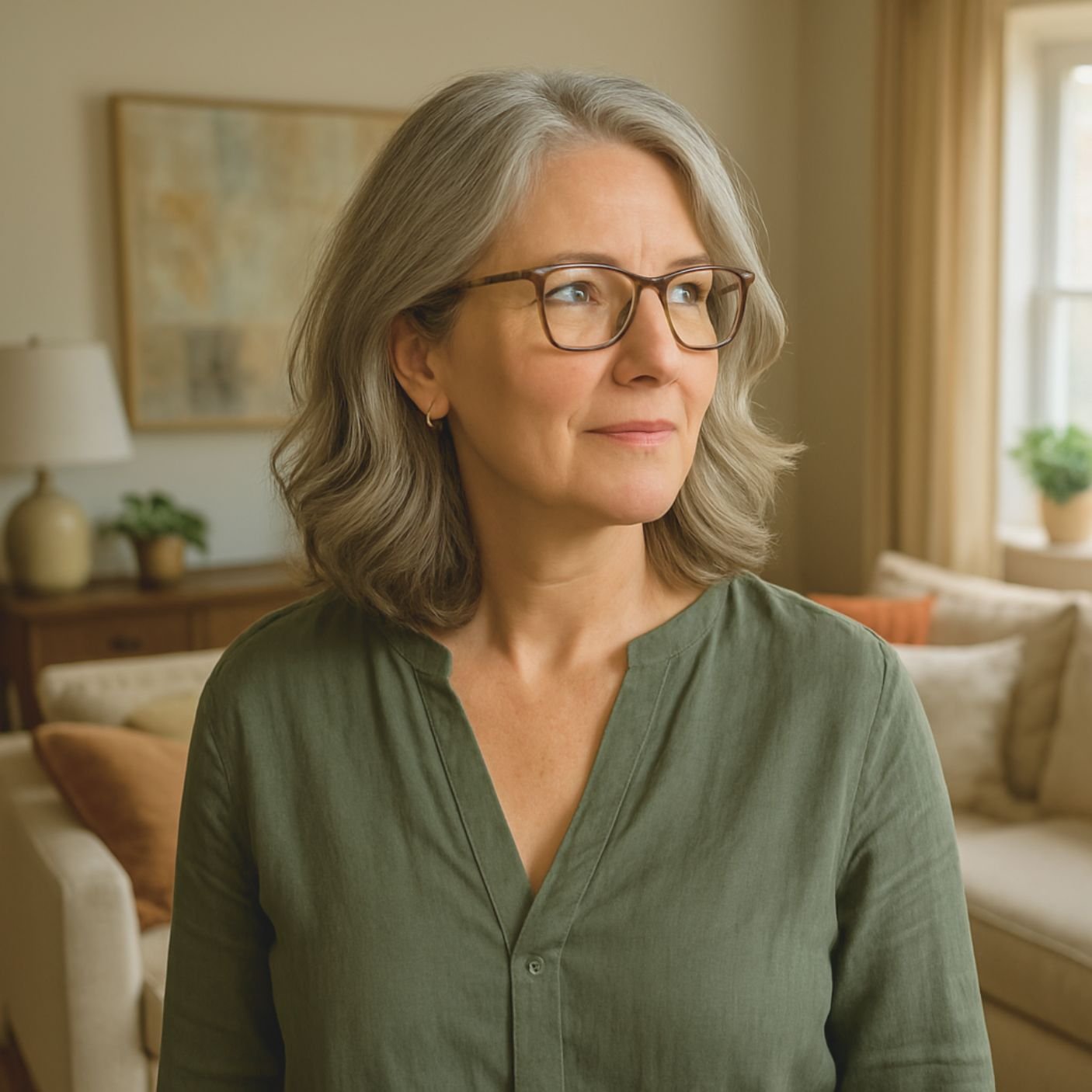
AUTHOR: Madeline Turner
Expert in Home Design, Architecture, and Sustainable Living Trends
With over 25 years of experience in interior design and lifestyle writing, Madeline Turner brings a unique blend of creativity, research, and practical know-how to 17Vibes. Her expertise spans home renovations, smart home technology, eco-friendly materials, and modern décor trends. Follow me on LinkedIn
